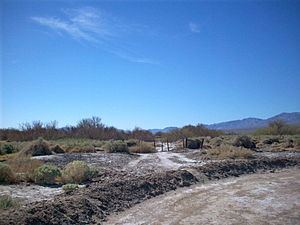 | ||
Restaurants The Lodge At Grand Teton, Hideaway, Rosati's Pizza, Uncle Tony's Kitchen, T J's Deli Similar Tule Springs Fossil Be, Floyd Lamb Park at Tule S, Tule Springs Ranch, Las Vegas Wash, Centennial Hills Hospital | ||
Lakes at tule springs ranch in floyd lamb state park las vegas nevada view 1
Tule Springs in Las Vegas, Nevada, is one of the larger urban retreats in the Las Vegas Valley. It is a significant desert ecosystem consisting of a series of small lakes that formed an oasis in this area of the Mojave Desert. Both the springs and the ranch are located within the Floyd Lamb Park at Tule Springs which is operated by the City of Las Vegas.
Contents
- Lakes at tule springs ranch in floyd lamb state park las vegas nevada view 1
- Map of Tule Springs Las Vegas NV USA
- Tule springs lake ranch at floyd lamb state park las vegas nevada 360 degree view 1
- Tule Springs Ranch
- Tule Springs Archaeological Site
- Tule Springs Wash
- References
Map of Tule Springs, Las Vegas, NV, USA
Tule springs lake ranch at floyd lamb state park las vegas nevada 360 degree view 1
Tule Springs Ranch
Tule Springs Ranch and the associated buildings are listed as a district on the United States National Register of Historic Places and located within this area. The ranch district was listed on the National Register of Historic Places on September 23, 1981.
Tule Springs Archaeological Site
The area was home to numerous Native American visitors in the pre-Columbian period. More recently, it served as a guest ranch for out-of-state residents seeking to "live" in Nevada and gain access to its easy divorce requirements. Several of the ranch's buildings remain, as do a few peacocks.
The springs archeological site was listed on the National Register of Historic Places on April 20, 1979.
Tule Springs Wash
The wash, also known as the Upper Las Vegas Wash is one of the feeds for the Las Vegas Wash. The wash area also includes several patches of the rare Las Vegas bear poppy.
This area is part of the proposed Tule Springs Ice Age Park, a 23,000-acre (9,300 ha) conservation area and a proposed national park. In 2014, congress designated the area as a national monument, naming it Tule Springs Fossil Beds National Monument.
